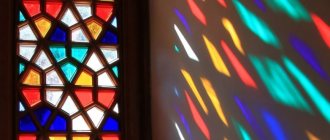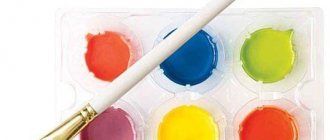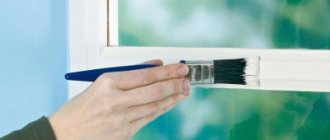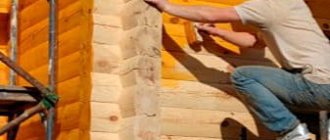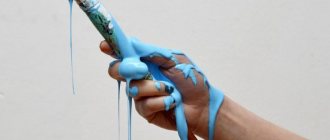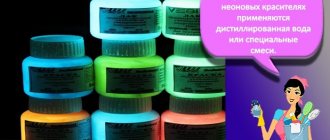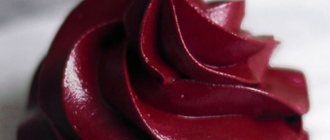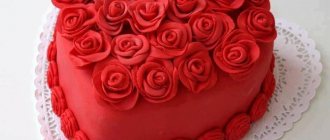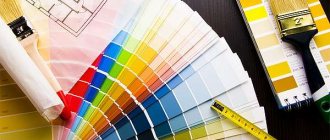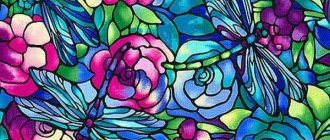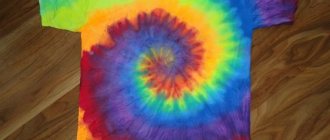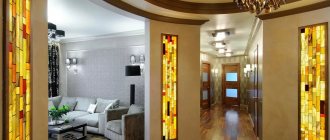In the last article we introduced you to enamel paint. Today we’ll talk about water-based paint, which is popular for exterior and interior work. Water-soluble paints adhere well to various surfaces, dry quickly, do not emit toxic substances, and are relatively cheap. Water-based paint consists of pigments and polymers suspended, but not dissolved, in water. After application to the surface, the water partially evaporates, partially absorbs, and the particles of the binder stick together, forming a durable film.
The history of Ebru
The method of creating paintings on water canvas appeared a long time ago, in the countries of the East. So in the 12th century in Japan they loved this type of creativity. Back then, images were created on thin rice paper, and the art was called “floating ink” because of the technology used.
Although historians have not been able to determine exactly where art originated. The technique is often referred to as Turkish creativity. In this country, masters can not only create abstract patterns on water, but also paint landscapes, birds and fish.
The name Ebru is translated from Persian as “air clouds”; it is precisely similar patterns that are often obtained when drawing.
The method of creating paintings on water canvas appeared a long time ago, in the countries of the East.
Chemical composition
If water or alcohols are used as a solvent in these products, then the binding element is synthetic polymers - PVA, acrylates, styrene-butadiene and butadiene-nitrile rubber. In addition, the structure of water-based painting mixtures contains:
- all kinds of coloring pigments;
- hardeners – driers;
- plasticizers designed to impart elasticity to the hardened coating and keep the entire paint and varnish system in a uniform state.
Used for finishing walls, ceilings and other surfaces indoors and outdoors (except for subfloors), these mixtures are chemically aqueous dispersions of an insoluble paint and varnish composition based on a polar solvent. Requirements for the values of mass fractions of constituent elements, as well as technical characteristics, are specified in the national standard GOST 28196-89.
What is the Ebru technique?
According to this art technology, to create a painting, Ebru paint is initially applied to water, after which the resulting pattern is transferred to a paper base.
It is necessary to apply coloring agents that do not react to exposure to water in a certain order. The layer adheres to the surface of the water surface, and a film covering of flowers is obtained. Using special devices for this creativity, the artist creates unusual weaves from shades, resulting in a painting.
When the image is ready, it is carefully transferred to a prepared base, which can be paper, fabric, or a piece of wood.
Today, the technique is becoming in demand, and there are even clubs teaching this technology. But you can learn to draw in the Ebru style at home; for this purpose you do not need to purchase a lot of equipment and materials. You can find them in a craft store.
This way you can combine your own learning with activities with your child, the process will be interesting for both parents and children, this is an opportunity to spend useful and exciting time together.
According to this art technology, to create a painting, Ebru paint is initially applied to water, after which the resulting pattern is transferred to a paper base.
Semi-solid watercolor in cuvettes
The main type of watercolor for painting, which is chosen by both experienced artists and beginners. As a rule, cuvettes are sold individually and in sets - they look like small bars reminiscent of candy. If you purchase paints in a set, it will also be convenient, because they are sold immediately in a plastic container that resembles a palette.
To paint with watercolors in cuvettes, you only need brushes and cups of clean water. But I would recommend getting another palette, because if you mix paint directly in the pans, it will become dirty very quickly. The paints will have to be washed, which means that part of the precious watercolor will simply be washed away with water.
This type of watercolor is not just approved and chosen by many professional artists - it fits perfectly on watercolor paper and produces rich, richly colored shades.
This paint is also not too expensive, and with its practicality and compactness, it becomes almost indispensable for all watercolor artists. Watercolors in cuvettes are ideal for outdoor, plein air work, when you need to make a quick sketch from life.
Features of unusual art
You should purchase not only paints for painting on water, but also prepare a water base. Ordinary water will not be able to retain the coating; hevea extract is added to it; the substance helps increase density, the liquid will become thicker, and drops of the coloring agent will not sink to the bottom before the required time.
The composition of the paints is unusual; it contains minerals and ox bile. Using an awl or other suitable tools, colors are mixed to form an abstract image that fascinates and attracts attention.
Ordinary water will not be able to hold the coating; hevea extract is added to it; the substance helps increase density.
What to consider when choosing wall paint
Can't decide on a color? Make your own inspiration board. Or add the interior colors you like to an electronic folder on your computer and analyze your tastes.
Don't be afraid to take risks with bright colors. However, add them carefully as an accent. For example, a bathroom in a neutral color will “make friends” with other rich colors.
Avoid sudden transitions from one room to another. Maintain harmony of colors, which will visually increase the space of the premises. Create your own samples by painting a drywall square. Examine the object in light and shadow, evaluate the change in shades and make your choice.
Necessary materials and equipment for drawing on water
Conducting a lesson at home using the Ebru technique is not difficult for a child; the process is exciting, and even kids can cope with it. This kind of art helps the child’s development and helps develop fine motor skills. All you need to do is prepare a simple set for the creative process, which includes:
- Containers with small sides;
- Prepared water that has been thickened;
- Paints on Ebru water;
- Comb, awl, skewers, knitting needles;
- A paper, fabric or wooden base for transferring the design.
You need to prepare a simple set for the creative process.
Paste watercolor in tubes
A worthy alternative to watercolor in cuvettes, which also has a clean and bright color. As a rule, watercolors in tubes have a large volume, which will allow the artist to work with larger forms and fill with color. This format of paint will not end halfway through the job and will almost always be at your disposal.
It is also worth noting that paste paints in tubes are very difficult to stain with each other, since you will only mix them on the palette. This paint is very durable, and to dilute it, just drop a couple of drops of water onto the squeezed out paint on the palette.
By the way, paste watercolors are also sold individually in some stores, so you can easily find the colors you need if your set runs out.
Thickener for ebru. How to breed
To obtain the desired thickness of the water base, it is necessary to introduce a thickener for the liquid. In special departments you can find ready-made mixtures for this purpose. They are diluted in water, following the instructions from the manufacturer; there is nothing complicated about it.
If you can’t buy a thickener, you can thicken the water with starch; add it and mix it with the liquid until it has a paste-like consistency.
To obtain the desired thickness of the water base, it is necessary to introduce a thickener for the liquid.
Solid watercolor in tiles
Watercolor in a solid state, or in tiles, is dry paint that has been previously poured into molds and dried in a special way. They sell it in different shapes and volumes, which is very convenient, especially if you use certain colors very often - you don’t have to buy a new set every time as soon as the desired color runs out.
This paint is an excellent material for beginning artists because it is very economical and does not require special storage conditions. But even if you bought paints in a set, it is better for you to try using all the paints to understand what kind of watercolor there is and what effects different combinations of paints can produce.
Paints for Ebru
The main element in drawing is, of course, paint. So, what colors are needed for Ebru? The composition contains a natural type of color and ox bile to obtain the necessary properties. They are more liquid in appearance, which allows them to spread evenly over the prepared base on water. Shake them well before use.
It is more convenient to apply the products when they are pre-poured into bowls; brushes or awls can serve as tools for the artistic process.
You can replace store-bought paints, when there is no need to constantly paint, with homemade solutions. The recipe for preparing the composition will be described below.
The composition contains a natural type of color and ox bile to obtain the necessary properties.
Honey (children's) watercolor
Familiar to many from school, these watercolor paints and their name refer us to their composition - natural substances containing corn glue, molasses or sugar.
As a rule, this type of watercolor is used in drawing lessons by children and teenagers. This is a good decorative paint, but it does not have all the properties and advantages of professional paint. If you try to make the same drawing, but only with honey or the same watercolor in ditches, you will get different results.
Although, if you have been drawing for a long time, then most likely you will get a good drawing even with the simplest and most childish watercolors. Indeed, in addition to the quality of the paints you choose, it is very important to know the techniques in which you can paint, and the basic properties that need to be taken into account in order to work with such a capricious paint as watercolor.
Water container
From the dishes you will need to prepare one for applying patterns. It should be the right size for the task at hand, and there should be sides to hold the liquid. You shouldn’t use tall ones; it’s easier to draw when they’re low.
It is also worth preparing a small container for paint, one for each shade.
It should be the right size for the task at hand, and there should be sides to hold the liquid.
Dilution with special acrylic thinners
Dilution with water or water with alcohol is only permissible when using a roller or brush. Paint sprayers and spray guns (painting equipment) require the use of acrylic thinners, the brand of which must be indicated by the manufacturer on the packaging. They have a specific smell and transparent appearance. The required amount of addition of such liquid depends on the scope of application, temperature and humidity of the external environment. Depending on the composition, acrylic solvents create a matte or glossy layer on the surface. Different coloring effects are achieved using a certain proportion, which is usually indicated on the thinner packaging.
Advantages of using acrylic solvent:
— accelerated drying time;
— the ability to create a matte or glossy surface;
— formation of an even layer without smudges and white deposits;
— chemical purity, compared to water;
— increased stability of paint characteristics.
Brushes for Ebru
Brushes are suitable with a hard base, horse or bristle hair is suitable. The quantity needs to be prepared according to the number of shades, then the colors will be applied without mixing, and the design will be more interesting.
The brush does not dip into the liquid; you just need to spray the color from the tool to then create patterns on the surface using the paint.
Brushes are suitable with a hard base, horse or bristle hair is suitable.
Other meanings of this word:
Random riddle:
Next to the tender raspberries, we recently planted a wonderful berry, very interesting! The color is like ink, I have never washed my “face”. Only these are not blueberries, these are ours.
Random joke:
Crying parents come to the guardhouse at the foot of the mountain and say: “Yesterday our son went to the mountains to ski, and he still hasn’t returned!” - Wait a bit. What is the name of your son? - Genrikh Pupkin! - Yandex, come to me! A healthy St. Bernard runs up and says to him: “Genrikh Pupkin, understand?” Search! After some time, Yandex returns and says: “Nothing was found in the mountains according to your request.” Found 283265 Heinrichs and 222388 Pupkins. Maybe look in the valley?
Did you know?
The deepest station of the Moscow metro is *Park Pobedy* - 84 m. (facts about the Moscow metro)
Combs
After spraying the dye, you need to give it direction; combs with metal spikes are suitable for this. They are made infrequently on the basis; it is with the spikes that the paint is drawn into the desired image using water.
After spraying the dye, you need to give it direction; combs with metal spikes are suitable for this.
Diluting acrylic paints with water
The basis of acrylic paints and varnishes is water, so it is advisable to use it to achieve the required consistency. An important point: you need to use only clean and cold water, standing for several hours or distilled, to prevent interaction between the components of the paint and varnish material and the thinner.
- dilution with water 1:1 - the material can be used to create a base layer, the paintwork lays down smoothly, without smudges or sagging, forming a uniform coating that effectively protects the surface from corrosion and aggressive environmental influences;
— 1:2 – the consistency is more liquid, allowing you to create a thin and even layer, the paintwork material saturates the brush or roller well;
– 1:5 – creates “colored water”, which is used to color textured details; the composition is well absorbed and fills depressions and other depressions on the surface;
— 1:15 – the proportion is not used often, it is intended to create a transition between tones (gradient); in fact, it is no longer paint, but colored water.
After applying acrylic water-based paint and varnish material, you must immediately thoroughly clean the tool used. This is explained by the fact that after drying, water-based acrylic paintwork becomes water-resistant. And, accordingly, rollers, brushes and other painting tools, once dry, cannot be cleaned.
Paper
To preserve the creative result, the painting is transferred to paper. You will need a fabric that is not too dense; according to the requirements, it must differ in the following parameters:
- The size must be suitable for the selected container;
- Absorb the coloring composition efficiently;
- It must withstand exposure to water so that it does not immediately become wet when exposed to it;
- Be in good shape and quickly restore it after drying;
- A suitable weight level is approximately 120gsm, which is thicker than printer paper.
Paper material is also sold specifically for this painting technique.
The fabric must be able to withstand exposure to water so that it does not immediately become wet when exposed to it.
Application of acrylic thinners
Specialized formulations are also divided according to drying speed. The correctly selected option allows you to perform work even in difficult conditions.
The following varieties are found:
- Slow. Suitable for external and internal work if temperatures are very high. The fact is that due to the rapid evaporation of ordinary water, the coating does not acquire the desired properties and may be destroyed. And slowly evaporating thinners make it possible to perform the work correctly, as a result of which the surfaces receive reliable protection.
- Average. This is a universal composition, the best option for working inside a house or apartment.
- Fast. They are used mainly outside, including at low temperatures. In such conditions, the paint, with simple dilution, does not have time to adhere to the base, and a quick thinner solves this problem.
The process of drawing on water
Having prepared the necessary materials, you need to understand how to draw in order to get a unique pattern and transfer it to a base made of fabric, paper or wood.
Having prepared the necessary materials, you need to understand how to draw in order to get a unique pattern.
Creating a background
Any picture requires a background; first the selected tone is sprayed onto the base, the first drops may sink, but after that the layer will be fixed. You can use up to three shades for the background; using more is not advisable. It is not worth making a thick layer; transferring it will be difficult.
Afterwards, you can apply other shades and draw with them using a comb or awl.
You can use up to three shades for the background; using more is not advisable.
Creating the main drawing
You need to draw patterns from large elements; complex details are drawn at the end. The first color is introduced in a small amount through an awl or a brush onto the surface, a round or oval spot will remain, another color is added on top, then they are stretched at the discretion of the master to obtain ornamental patterns.
Each time you dial a new shade, you need to clean the device for work.
You need to draw patterns from large elements; complex details are drawn at the end.
Transferring an image to paper
It is not difficult to transfer the design to the material; the paper web is applied to the image for a short period, then left to dry. The dried base can be leveled under a press if necessary.
It is not difficult to transfer the design to the material; the paper web is applied to the image for a short period, then left to dry.
Soft watercolor in tubes
In its consistency, soft watercolor is close to liquid. But it differs from solid watercolor in a more saturated color pigment.
To paint with such watercolors, it is better to immediately purchase empty cuvettes or a small palette and squeeze out a little paint into them. If after painting you have some unused paint left, it’s not a big deal - the watercolor will dry, but before the next use you can spray it with water and start painting again. This paint is also well suited for working on large format paintings and the technique of filling the picture with the main color.
How to make ebru paints with your own hands
It is possible to make paints for Ebru yourself, but you will also need a homemade base. This is how acrylic paints are used, which are made liquid, ordinary water is added to them, and glycerin or starch is used to thicken the water film.
For children's work, you can use gouache, also diluted with water. The base will be full-fat milk, with a couple of drops of dishwashing liquid added.
Acrylic paints or gouache are suitable, they are made liquid and ordinary water is added to them.
Advantages and disadvantages
Those water-soluble (acrylic, latex and PVA) paints that are used for decorative treatment of walls and other surfaces made of wood, plaster, putty, brick are valued by builders and designers for many advantages. Let's list the main ones:
- Ease of application, as well as safety; when working with water-dispersion paints, there is no need to protect the operator’s respiratory organs, because these materials are practically odorless, and their fumes are not particularly toxic.
- The high speed of the polymerization process in air ensures a short drying time of the paint coating, the exact duration of which is determined by specific local conditions (optimally: good ventilation, low or moderate humidity, temperature in the range of 22–26 degrees Celsius).
- Excellent adhesion and versatility in relation to the working surface: cement-sand base, brickwork or gas silicate blocks, plasterboard and products based on it, lumber and natural wood - water-soluble colored and white paints are ideal for all surfaces.
- Thin-layer application, good hiding power and huge possibilities for choosing shades due to the good compatibility of the copolymer dispersion with different types of pigments from which the colors are made.
- The tightness of the layer, which protects the materials of walls, partitions and ceilings from unwanted microbiological activity and corrosion processes, and also allows to increase the service life of the base.
- The aesthetic appeal of a decorative coating, acrylic paints after hardening give a calm, fine roughness, latex paints form matte layers with a slight glossy sheen.
When considering the disadvantages of this product, it should be taken into account that the polymerization process is possible only at positive temperatures.
Therefore, on packages with coloring dispersions, domestic and imported manufacturers indicate a limitation - the temperature of the wall or other working substrate should not be lower than +5 degrees Celsius. In addition, in winter it is unacceptable to store paint containers in unheated warehouses or other rooms.
The high setting rate, due to the water or alcohol base, for water-soluble paints and varnishes results in the possibility of thickening of the composition during storage. But due to the availability of solvents, eliminating this problem is not particularly difficult.
Water-borne paint dispersions are widely used in the construction industry: for initial finishing, repair or reconstruction of outdated finishing. Allowing you to mask microcracks, these paints and varnishes are characterized by the elasticity of the layer. This quality makes them the best option for finishing wood products, because such material can change volume during use.
How can you replace traditional materials for ebru
A thickener can be made using starch, which is diluted to a paste-like state with water. Milk can be used; its fat content should be maximum; glycerin can also serve as a thickener.
Acrylic and gouache paints are suitable. Each type must be made liquid by adding water.
A thickener can be made using starch, which is diluted to a paste-like state with water.
Drawing on water is an interesting option to create a unique pattern. The process is exciting and you can spend your free time doing creativity. To do this, you will need to purchase special materials and tools, or make the materials yourself.
Liquid watercolor in bottles
A very simple and understandable type of watercolor, because you can work with it straight from the bottle, since it is already in a liquid state! But, if you feel that the paint is too bright and saturated for the desired effects, then it can be further diluted with water.
This watercolor will help you achieve beautiful shades and different color combinations that are difficult to create, for example, with the same paste watercolor.
There is also a small dropper on the stopper of the paint bottle, with which you can vary the amount of paint and create the necessary proportions.
Liquid watercolor can be used both for painting in traditional techniques and for decorative work, for example, with an airbrush. You can also create various sketches and illustrations with it.
Pros and cons of painting walls
Apartment owners and professional designers pay special attention to wall decor, because they can be both a background for the main stylistic ideas and bright accents in the interior. The finishing wall covering can be very different: wallpaper, plaster and wall paint. It is familiar to everyone and has both its advantages and some disadvantages.
The undeniable advantages of wall paint are:
- Large selection of colors and textures. Thanks to modern technologies, in the process of preparing the composition, the painter can independently create the desired shade and texture by adding dyes and abrasives.
- Long service life. High-quality materials, with proper surface preparation and application technology, do not lose their decorative properties for a long time.
- Paint, unlike wallpaper, is less attractive to pets, and therefore the risk of damage to the surface from their paws and teeth is much lower.
- Any defect that appears can be quickly eliminated without resorting to large-scale repair work.
- With some experience in repair work, applying the composition to the walls does not take much time.
- The composition is convenient to use on walls with complex geometry: having protrusions, niches and other irregularities.
- When you are tired of the old design of a room, you can quickly repaint the walls in a new color.
- Simple periodic cleaning helps extend the service life and maintain the aesthetic appearance of the surface.
Wall paint also has its disadvantages:
- To obtain a high-quality result, the surface must be prepared for painting: leveled, primed, and special impregnations applied if necessary.
- If the technology is not followed, a low-quality composition is chosen, or there is a lack of experience, the coating effect may be uneven.
- The painted wall is sensitive to mechanical loads and abrasive effects.
- Glossy compounds can attract dust from the air.
Differences between water-dispersion paint and water-based paint
Advantages of water-based paint.
- The main component of paint is water, it is the so-called external phase containing fatty substances and pigments
- The mechanism of action of paint after application to the surface is that water, which promotes the distribution of binders and pigments, evaporates, and the above-mentioned substances form a coating of a durable “breathable” film that is resistant to abrasion.
- Different types of binders determine different properties of the paint and its scope of application.
- The paint is not resistant to moisture and the paint layer may be damaged by repeated wet wiping.
- Due to the presence of water in the composition, during freezing and subsequent thawing, the paint may lose some of its properties.
- Sold in different color options.
Advantages of water-dispersion paint.
- Water as the main component contains a suspension of pigments and binders in the form of dispersed tiny particles, without dilution with organic solvents, unlike water-based paint.
- The mechanism of action of water-dispersion paint does not differ from water-emulsion paint (from the point of view of interaction with the surface, these paints can be called identical).
- Water-dispersion paint repels water well (especially its individual types), due to which it is not only highly resistant to abrasion, but also to wet wiping, which significantly expands its scope of application.
- It can also deteriorate when frozen and then thawed.
- Sold mainly in white, it is not advisable to purchase it in another color, since coloring at the manufacturing plant may indicate the manufacturer’s desire to hide the low quality of the white pigment. The paint can be tinted to the desired shade using a tint, however, it should be taken into account that the main color will be white, and when planning the design, proceed from this.
Thus, it is obvious that the terms “water-dispersion” and “water-based” are not interchangeable. These paints differ both in composition and purpose, and also have some nuances. Also, among the two types of these paints and varnishes, there are obvious similarities that explain why one concept is often replaced by another.
How to paint walls correctly?
Proper painting of walls in an apartment involves sequential completion of all stages:
- Preparation of the coloring composition and necessary equipment.
- Protecting floors, radiators and window openings from accidental paint contact with polyethylene.
- Removing old topcoat.
- Putty all irregularities.
- Removal of dust and construction debris.
- Surface priming.
- Paint preparation: thinning and stirring if necessary.
- The walls are painted with round rollers starting from the corners in the direction from the windows to the doors.
- Hard-to-reach places are painted with special small rollers and brushes.
